
For multiple weeks, U.S. corn and soybean quality has tilted lower, according to the latest USDA Crop Progress report, as the agency released its latest findings Monday afternoon for the week ending August 12.
USDA lowered its assessment of this year’s corn crop from 71% rated good-to-excellent the prior week to 70%. Crop quality is still trending above 2017’s pace, with 62% of the crop in similar condition this time last year. Another 20% of the 2018 corn crop is rated fair, with the remaining 10% rated poor or very poor.
A state-by-state glance reveals some key production areas are still generating a high-quality corn crop this year, led by Nebraska (83% good-to-excellent), North Dakota (79%), Minnesota (77%), Illinois (76%) and others. On the other end of the spectrum, a handful of states have at least 30% of their corn crop rated poor or very poor, including North Carolina (30%), Texas (36%) and Missouri (45%).
“Corn ratings fell for the fourth straight week, reducing yield potential nearly one bushel per acre nationwide accord to our model,” says Farm Futures senior grain market analyst Bryce Knorr. “That brought the estimate of yields based on state conditions to 178.5 bpa, one-tenth of a bushel above USDA’s forecast Aug. 10.”
Physiologically, corn continues to pace about a week ahead of average. A total of 73% of this year’s crop is now at dough stage, up from 57% a week ago and well ahead of the five-year average of 56%. And 26^ of the crop is now at dented stage, up from 12% a week ago and a five-year average of 13%.
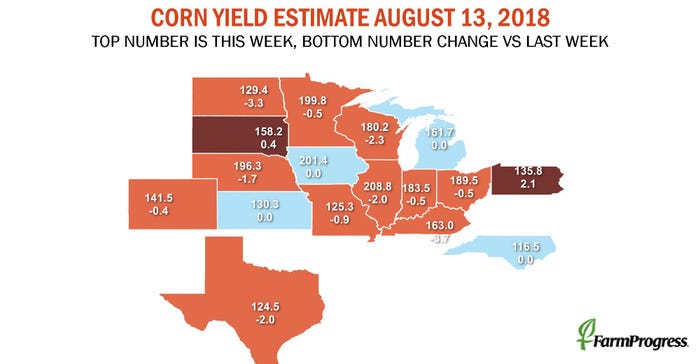
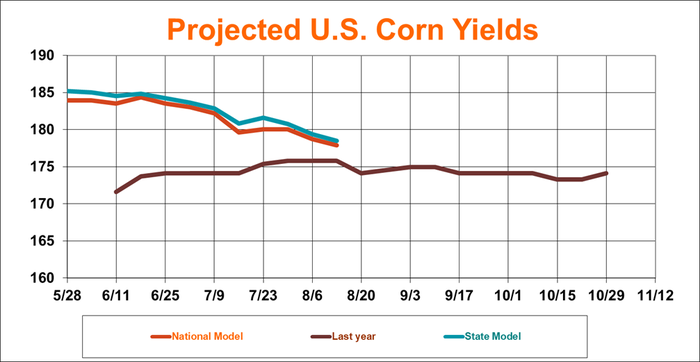
Soybean crop condition also slipped for the week ending August 12, with 66% rated good-to-excellent versus 67% the prior week. Another 24% of the crop is rated poor (up 1 point from the prior week), with the remaining 10% rated poor or very poor (unchanged from the prior week). Crop quality is still trending higher than 2017, with 59% of the crop in good-to-excellent condition this time last year.
“Increases in soybean yield potential were similarly hard to find, gaining ground only in Louisiana, Indiana and North Carolina,” Knorr says. “Overall yield potential fell two-tenths of a bushel per acre, reducing the yields based on national ratings to 51 bpa, compared to the 51.6 bpa found by USDA.”
Nearly all of the 2018 soybean crop is blooming as of last week, with 96% of the crop reaching that stage – slightly ahead of 2017’s pace of 93% and the five-year average of 92%. And 84% of the crop is setting pods, which is moderately ahead of 2017’s pace of 77% and the five-year average of 72%.
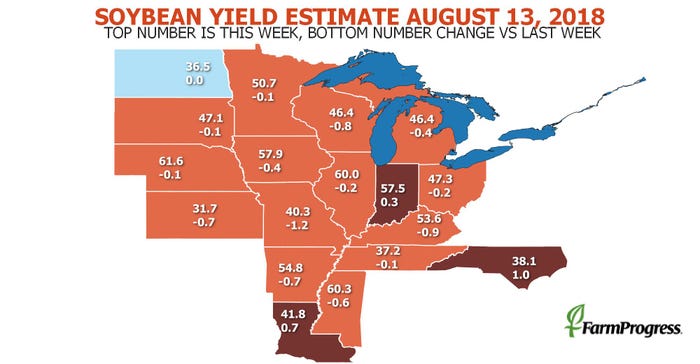
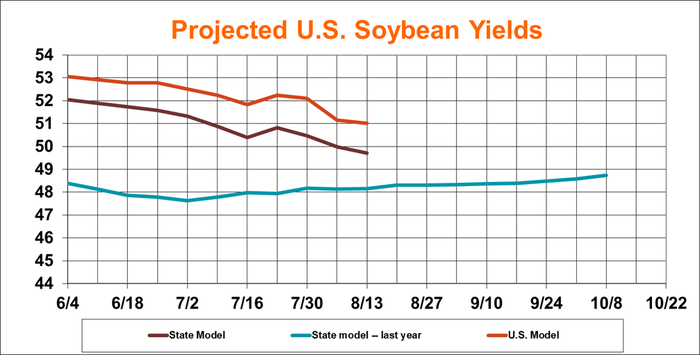
The spring wheat crop made an uneven quality shift last week, with the percentage of the crop rated good moving higher (62% versus 60% the week prior) but the crop rated excellent moving lower (13% versus 14% the week prior). Of the six states that produce 99% of the nation’s spring wheat crop, two are below average quality (South Dakota and Montana), with the remaining four higher than the nationwide average (Idaho, Minnesota, North Dakota and Washington).
“Spring wheat ratings improved as more results came in off the combine,” Knorr says. “The gain was modest, just a tenth of a bushel per acre, but yields based on the ratings continue to run well above USDA’s forecast yield of 47.6 bpa.”
Spring wheat harvest is moving along, at 35% complete for the week ending August 12 – up from 13% the prior week. That pace is a bit slower than the progress of 38% last year but moderately ahead of the five-year average of 27%.
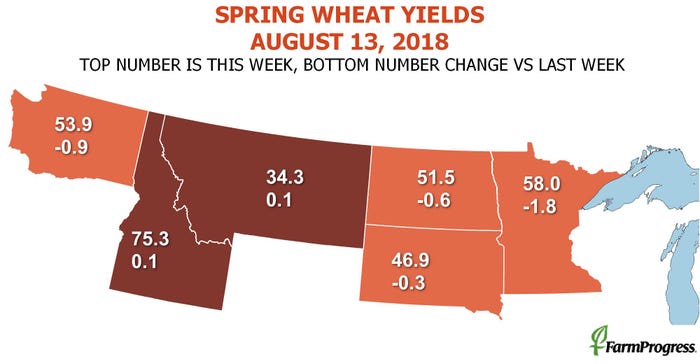
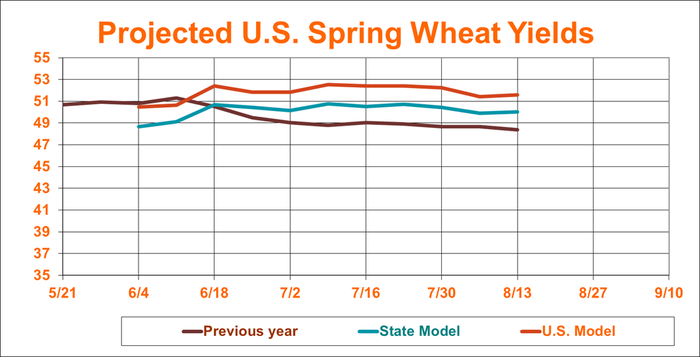
Winter wheat harvest nears the finish line, at 94% – still a bit slower than 2017’s pace of 97% and the five-year average of 96%. Only seven of the top 18 production states have measurable progress yet to make, including California (98% complete), Idaho (70%), Michigan (96%), Montana (67%), Nebraska (98%), Oregon (90%), South Dakota (97%) and Washington (70%).
Sorghum quality was unchanged from the week prior, with 49% of the crop rated good-to-excellent. Seventy-eight percent of that crop has reached heading stage, with 37% coloring and 21% matured.
The U.S. cotton harvest is right around the corner, with 13% of the crop at open-boll stage, which is slightly ahead of 2017’s pace of 10% and the five-year average of 9%.
About the Author(s)
You May Also Like






